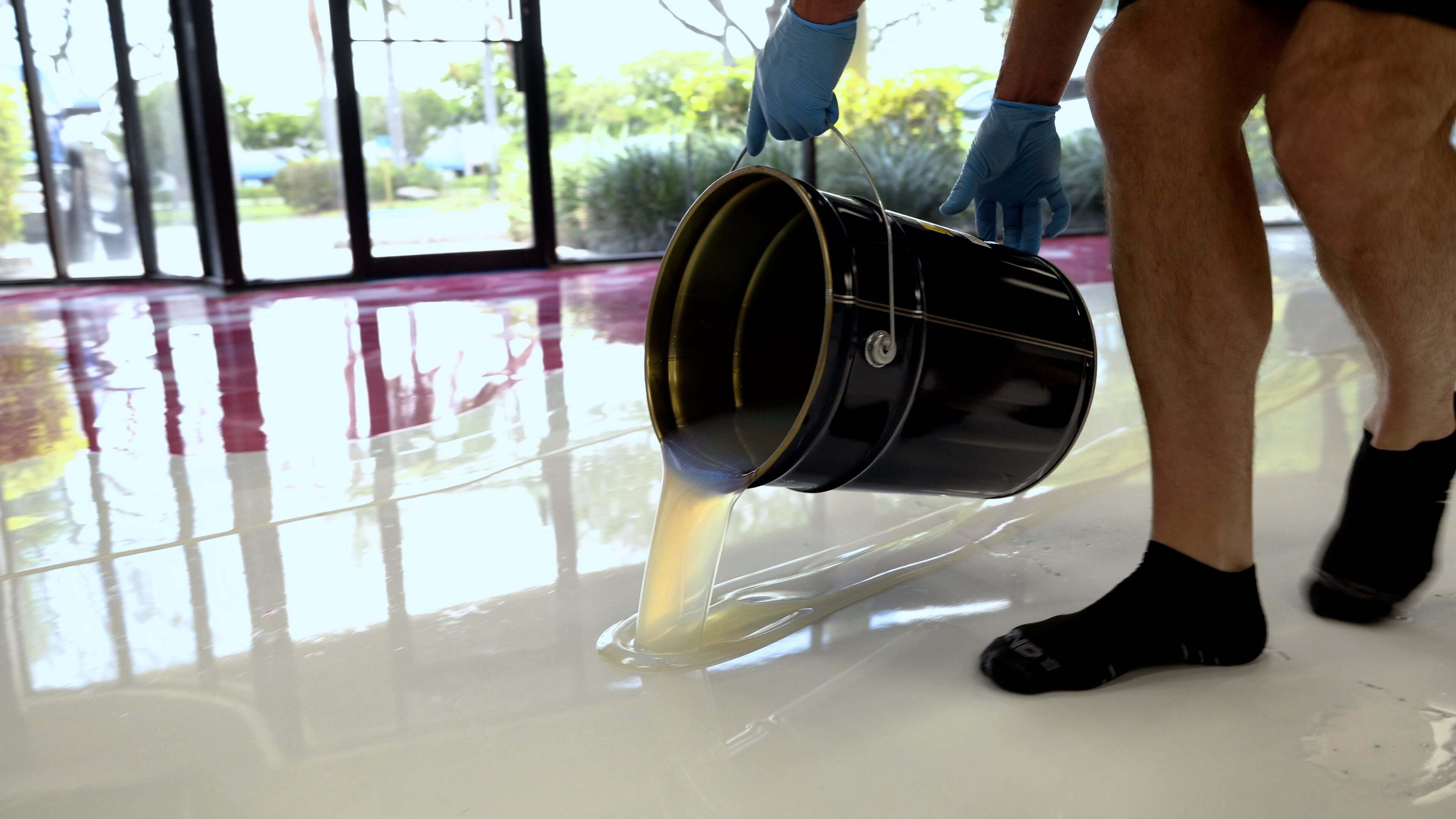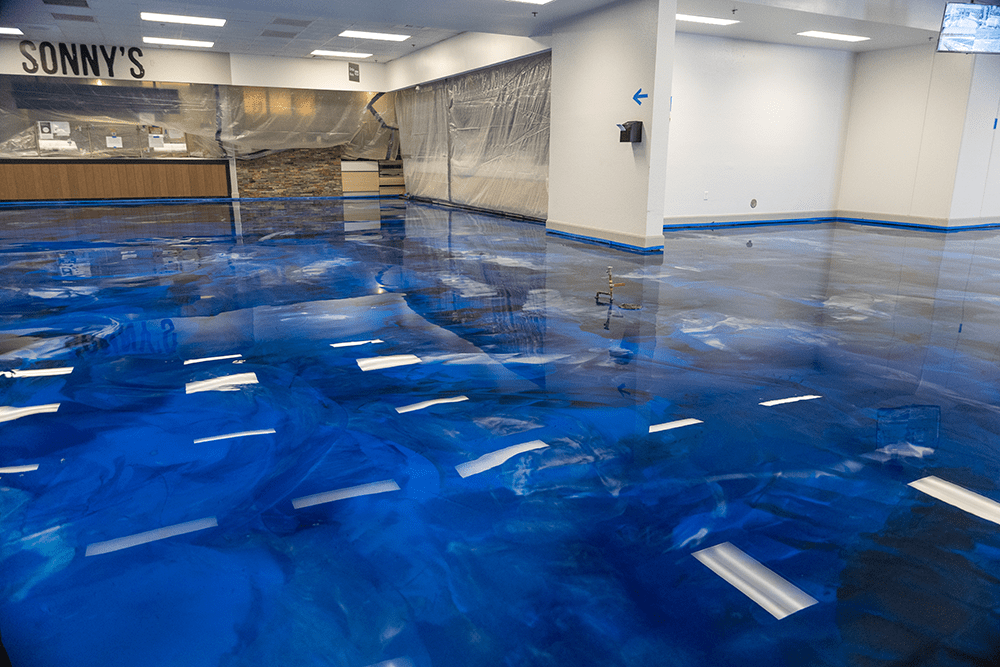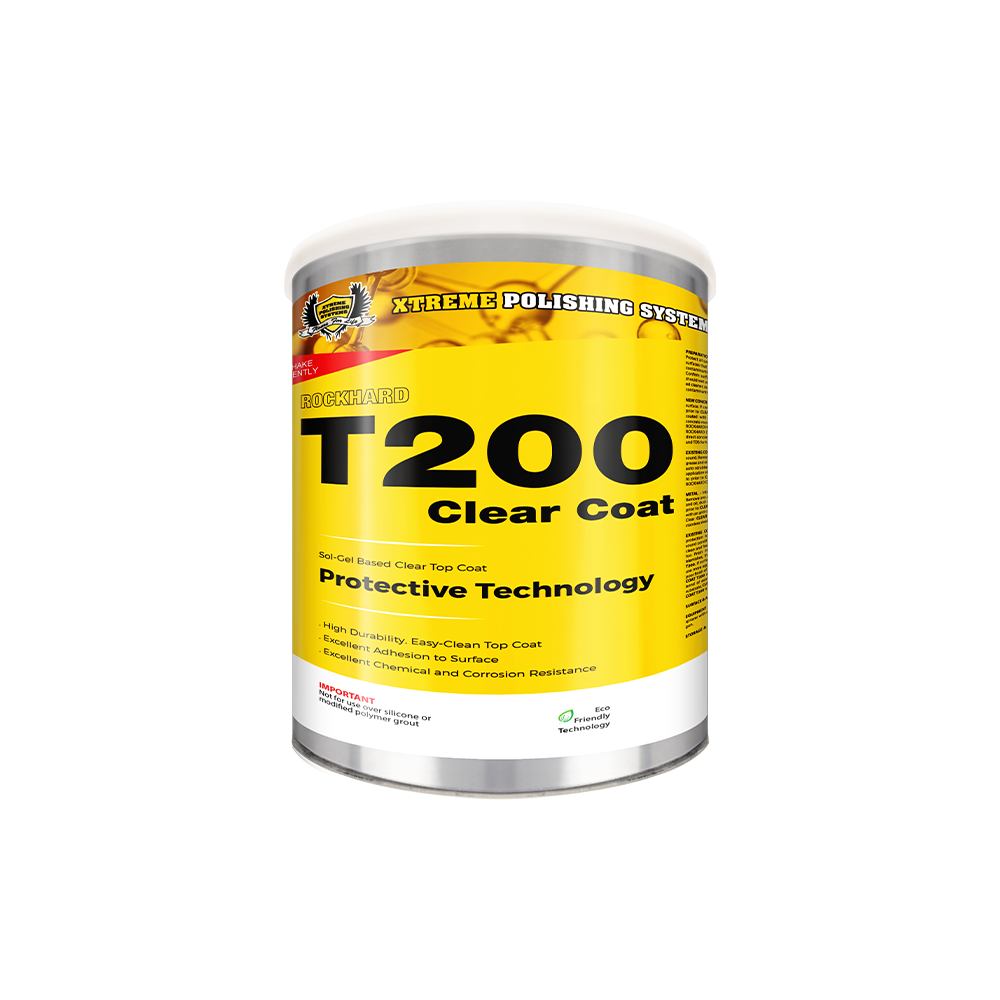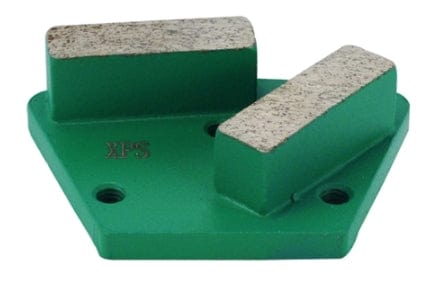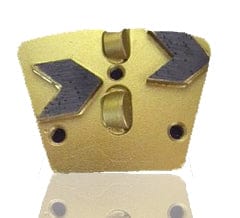1. Durability and Performance
Epoxy Flooring: Built for strength, epoxy is one of the most durable flooring options available. It can withstand heavy machinery, chemical spills, and high foot traffic without cracking or peeling. Epoxy floor coatings are also resistant to impact and abrasion, making them a go-to choice for garages, warehouses, manufacturing plants, and even modern living spaces. Epoxy floors form a hard, protective surface that can last for decades with proper care.
Laminate Flooring: While laminate offers decent resistance to daily wear and tear, it’s more prone to scratches, moisture damage, and delamination—especially in high-humidity or high-traffic areas. Laminate is typically constructed from layers of high-density fiberboard with a photographic layer to mimic real wood or stone. Though stylish, it can warp or bubble when exposed to excessive moisture or heavy impact.
Winner: Epoxy flooring, especially for demanding environments where performance and longevity matter.
2. Appearance and Customization
Epoxy Flooring: Epoxy offers limitless design possibilities. From sleek solid colors and multi-colored flake systems to artistic metallic epoxy and even 3D effects, epoxy resin systems can be completely customized to match your aesthetic vision. This makes epoxy flooring ideal not only for industrial spaces but also for homes, retail environments, showrooms, and creative projects.
Laminate Flooring: Laminate is designed to replicate the appearance of hardwood, stone, or tile, and is available in a variety of finishes and patterns. However, design options are limited compared to epoxy. The visual effect is fixed and lacks the depth, gloss, and three-dimensional customization that epoxy resin provides.

Winner: Epoxy flooring for maximum design versatility and visual impact.
3. Installation Process
Epoxy Flooring: Installing epoxy floors typically requires professional expertise. The process involves surface preparation (grinding, cleaning, or repairing the substrate), application of primers and base coats, followed by decorative flakes, metallic pigments, or color layers, and finally a protective topcoat. While it requires time and precision, the result is a seamless, durable, and visually striking floor. For best results, use high-quality products like those from Xtreme Polishing Systems, including epoxy resin kits, grinders, and topcoats.
Laminate Flooring: Laminate flooring installation is simpler and more DIY-friendly. It often uses a click-and-lock system that allows the planks to snap together and float over an underlayment. It can be installed relatively quickly over existing floors without specialized tools.

Winner: Laminate flooring for ease of installation, particularly for homeowners seeking a quick project.
4. Maintenance and Longevity
Epoxy Flooring: One of epoxy’s biggest benefits is its minimal maintenance. Epoxy floors are non-porous and resistant to stains, spills, and bacteria. Routine cleaning involves sweeping and occasional mopping with a mild cleaner. Because of their durability and resistance to chemicals and abrasion, epoxy floors can last 10-20 years or more without needing replacement.
Laminate Flooring: Laminate requires more careful maintenance. It is not waterproof, and water spills need to be cleaned up immediately to avoid damage. Over time, laminate planks may become scratched, chipped, or swollen, requiring individual plank replacements or a full floor redo.
Winner: Epoxy flooring for long-term durability and low maintenance.
5. Cost Considerations
Epoxy Flooring: The upfront cost of epoxy floor installation can be higher due to labor and surface prep requirements. However, its durability and long life make it a cost-effective investment over time. Epoxy resin systems from suppliers like Xtreme Polishing Systems are formulated for strength and longevity, reducing the need for repairs or frequent replacements.
Laminate Flooring: Laminate is generally more affordable at the outset, both in terms of material and installation. It can be a good option for quick upgrades or temporary spaces, but may require more frequent replacement in high-use environments, which can add to long-term costs.

Winner: Tie – epoxy for long-term value; laminate for short-term budget-friendliness.
6. Environmental Resistance
Epoxy Flooring: Epoxy is highly resistant to moisture, chemicals, heat, and UV exposure (with the right topcoat). This makes it suitable for basements, garages, commercial kitchens, and exterior applications with proper formulations.
Laminate Flooring: Laminate does not handle moisture or temperature fluctuations well. Excessive humidity can cause warping or separation, and exposure to direct sunlight can fade the design layer over time.
Winner: Epoxy flooring, especially for environments with challenging conditions.
Conclusion: Which One Should You Choose?
If you're looking for a stylish, durable, and low-maintenance flooring solution that stands the test of time, epoxy flooring is the superior choice—especially for garages, basements, commercial spaces, and any area exposed to heavy use or moisture. Epoxy floors combine performance with high-end aesthetics and are trusted across industries for their toughness and versatility.
However, if you're seeking a budget-friendly option for a quick renovation in a low-traffic residential space, laminate flooring may suit your needs—just be aware of its limitations in durability and moisture resistance.

No matter your choice, it's crucial to use trusted products and tools. Xtreme Polishing Systems offers everything you need to achieve a professional epoxy installation—from premium epoxy resin systems and decorative additives to surface preparation equipment and training courses. Whether you’re a DIYer or a contractor, our mission is to provide you with the resources to create beautiful, lasting floors.
Explore our full catalog today and take the first step toward transforming your floors with the power of epoxy.


